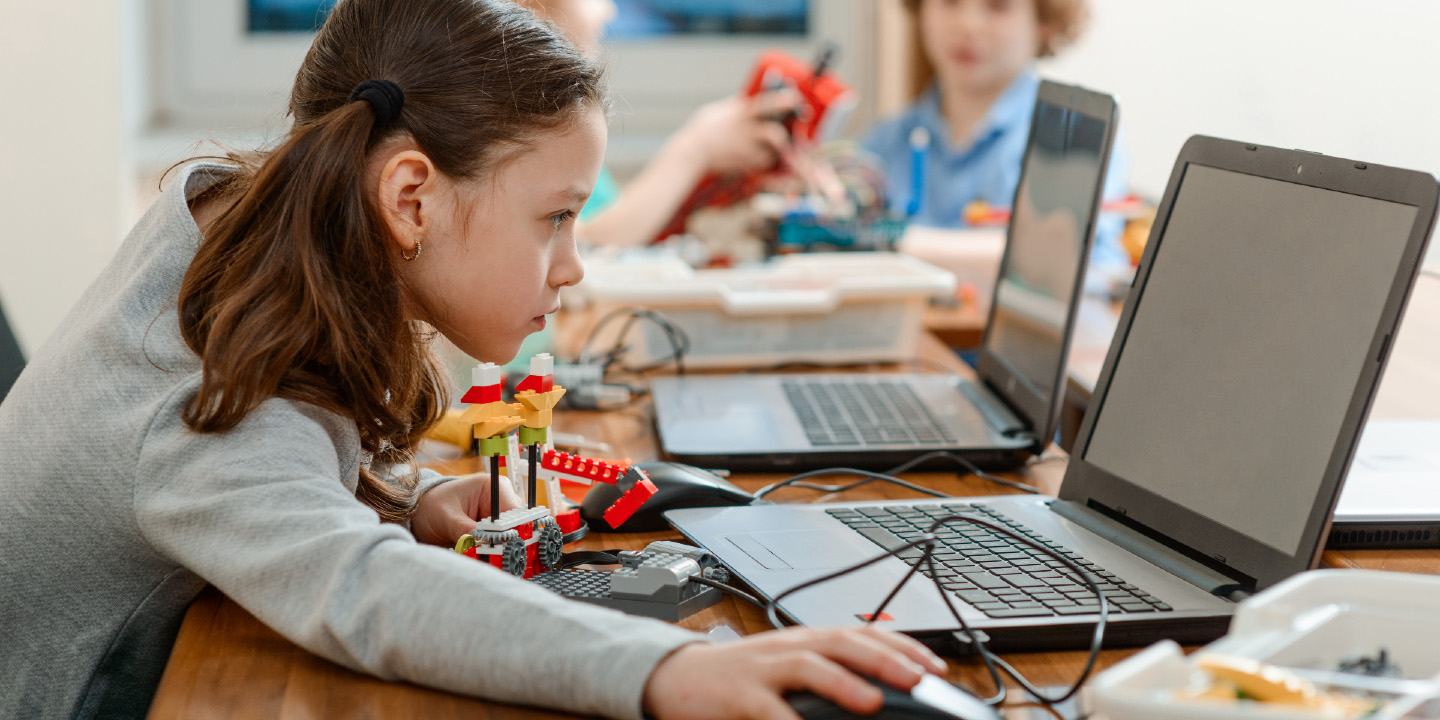
New research into girls studying digital technology at school
6 Dec 2022 4 minute readCSIRO has engaged ACER to examine the factors that help or hinder girls studying digital technology at school.
In an article published in Teacher, ACER researchers Kristy Osborne and Sarah Buckley talk about their research for CSIRO on the factors that can help or hinder girls studying digital technology.
2021 data showed that only 23% of the information technology research and teaching workforce was female. Osborne and Buckley say that to increase pathways into science, technology, engineering and mathematics (STEM) careers, it is important to investigate ways to improve girls’ engagement with digital technology at school.
Digital technology, as defined in the Australian curriculum, covers two strands. The first relates to the information system components of data as well as the digital systems such as hardware, software and networks. The second strand covers digital processes and production skills – for example, using digital systems to create ideas and information – and defining, designing and implementing digital solutions.
In their Teacher article, Osborne and Buckley describe the findings from the first stage of their research. Their review of research, policies and programs found 3 key factors that can facilitate female students’ engagement with digital technology:
- having parents who support their children’s access to digital technology and help them promote cyber safety in the home (see the eSafety Commissioner’s guidelines)
- ensuring that students are presented with engaging content and contexts in digital technologies education
- stopping the stereotypes around girls, gaming and digital technology.
These factors are explored in more detail in the Teacher article.
The second stage is underway and includes a survey for STEM teachers, interviews with educators and school-based research. The survey is seeking STEM teachers’ perspectives on some of the barriers and facilitators affecting young girls’ participation in digital technology programs. These responses will help CSIRO better understand how to support girls’ engagement with digital technology in their education and outreach initiatives.
Osborne and Buckley note that CSIRO offers several programs for teachers and students of digital technology. These include:
- CyberTaipan – an Australian Youth Cyber Defence Competition for teams of high school aged students
- Microsoft FarmBeats – an interactive STEM education program that provides teachers and students in Years 9 and 10 with tools to explore big data, AI (artificial intelligence), machine learning and IOT (internet of everything) technologies
- Bebras – an international initiative that engages students' computational thinking and problem-solving skills in a fun, interactive environment.
More information about these programs are available on CSIRO’s website and the resources listed are aligned with the Australian curriculum.
Get involved:
If you are a STEM educator and would like to contribute to this important work, you can complete the online survey until the end of 2022.
Read the full article:
‘Digital technologies for everyone: Factors contributing to female participation’ written by Kristy Osborne and Sarah Buckley and published in Teacher magazine, is available at www.teachermagazine.com